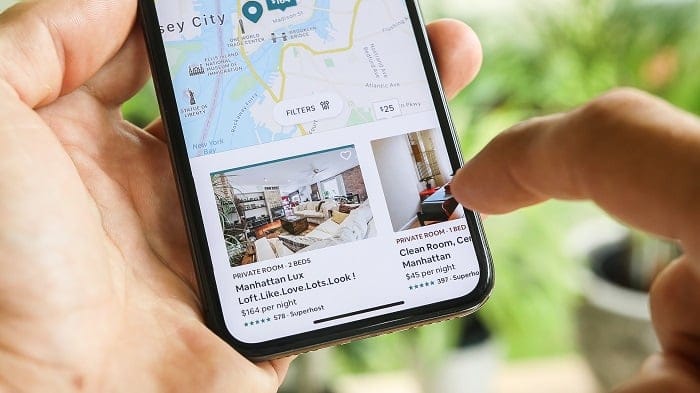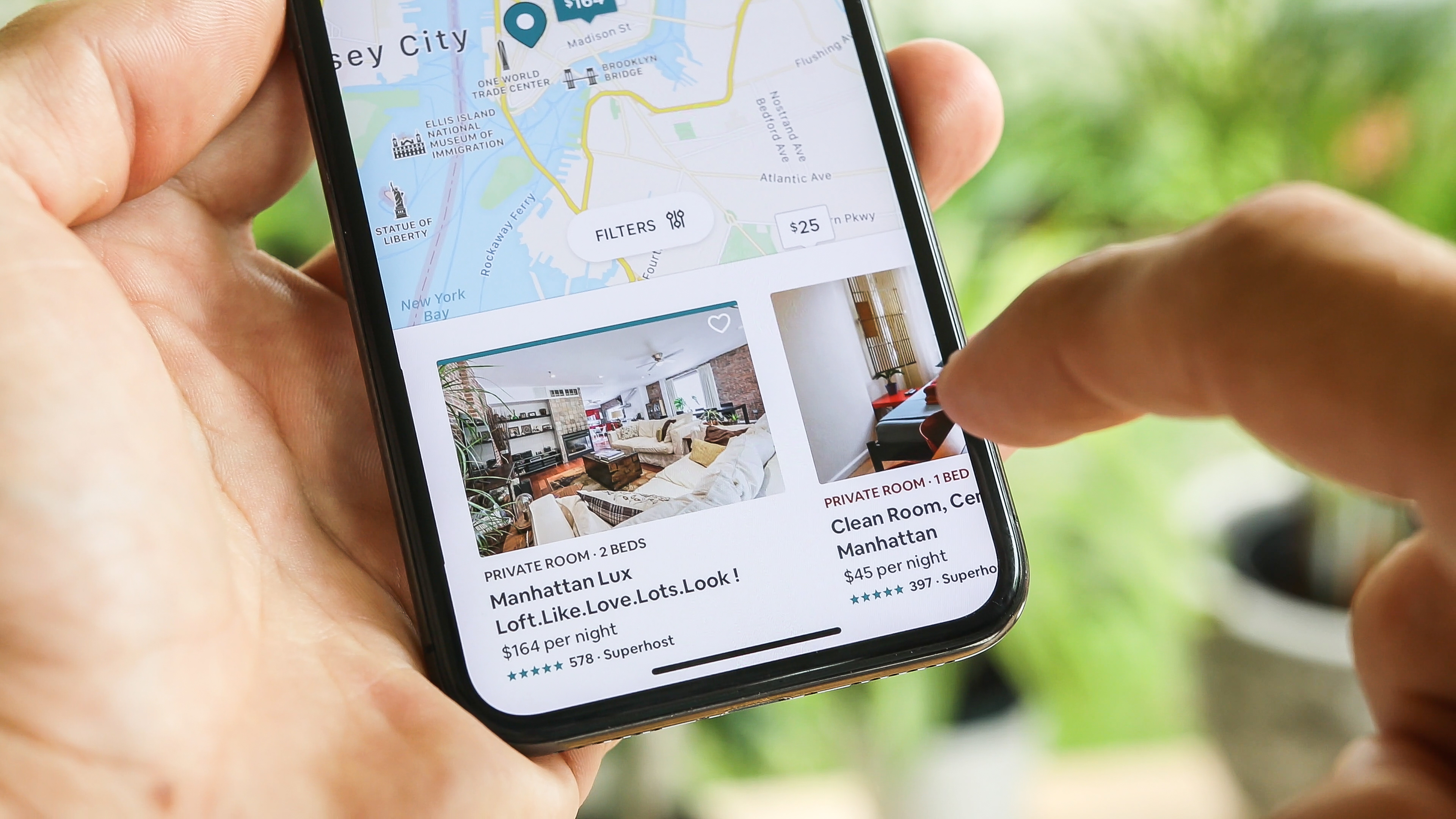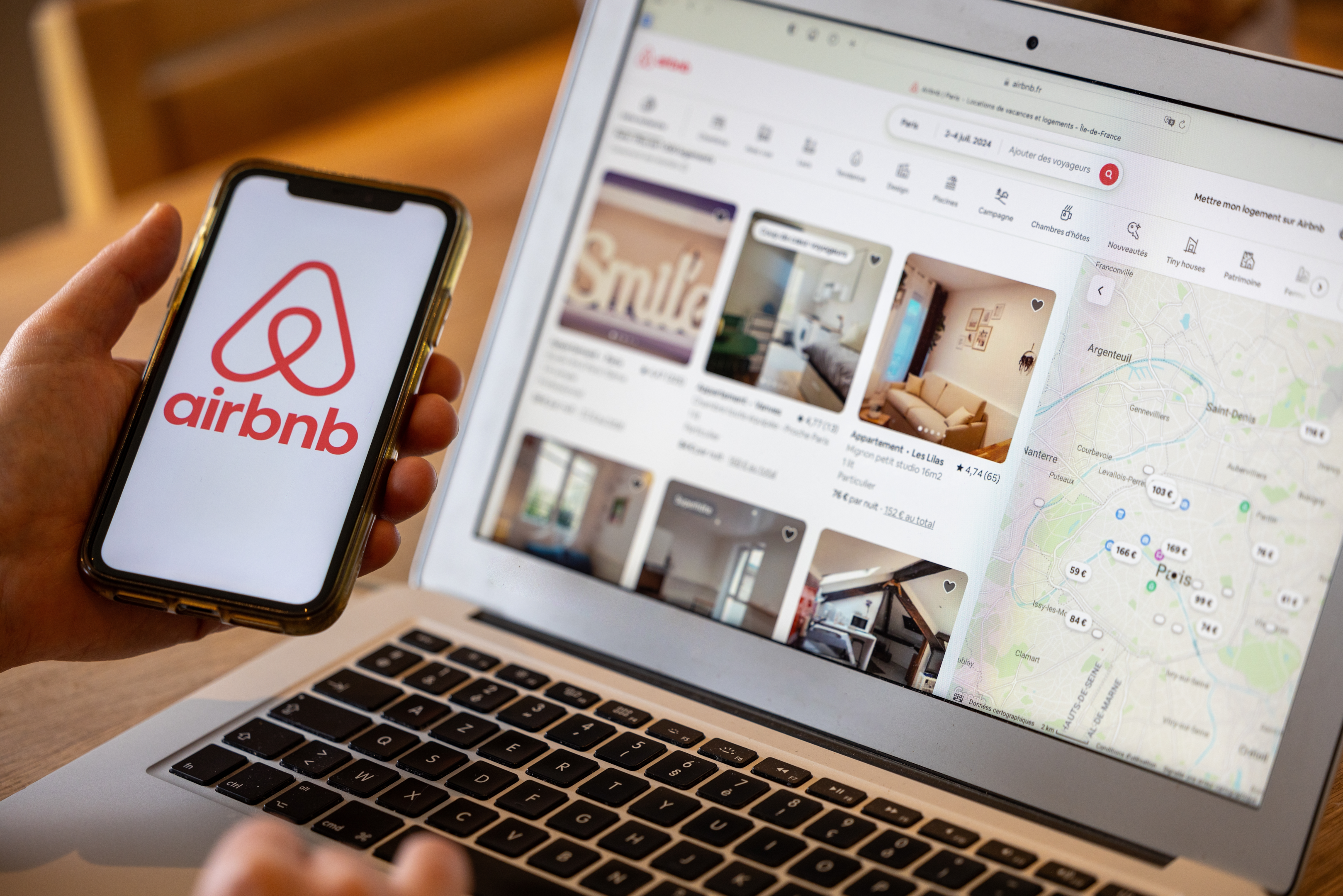Airbnb Demand in 2024: Finding Profitable Markets

As an Airbnb investor, your top priority is identifying a market with high potential for ROI. The initial step involves understanding Airbnb demand in the area where you want to invest in a short-term rental business.
You might be concerned about the increasing economic insecurity and its implications for the real estate housing market and short-term rentals. Recently, there has been a growing sense of alarm among some Airbnb experts who believe that the Airbnb market is facing a crisis. They shared numbers to show a significant drop in bookings in US cities like Phoenix.
Is Airbnb experiencing a decline as rumors suggest? Is supply oversaturation and declining demand taking its toll? How can Airbnb hosts remain profitable in 2024 while generating consistent revenue? What are emerging markets to focus on now?
We’ll explore these and other pressing questions that both current and new Airbnb hosts have on their minds.

Is Airbnb Experiencing a Downturn?
The short-term rental markets are currently undergoing changes. While overall Airbnb demand continues to grow and tourism flourishes in the post-pandemic world, market dynamics are shifting.
Investing in Airbnb during the 2010s felt like participating in a “gold rush,” characterized by growth by leaps and bounds. There were times when merely creating a property listing resulted in money flowing into your wallet.
However, today, the short-term rental market has matured. Numerous players have entered the game, leading to supply saturation in the past few years.
We’ll break down some of the key factors reshaping the Airbnb short-term rental market.
Adapting to the Post-Pandemic Shift
Since its inception, Airbnb demand has gone through phases, predominantly marked by steady growth. Throughout the 2010s, the company cemented its leadership in the vacation rental market, becoming a household name for short-term lodging.
The Covid-19 pandemic notably disrupted the Airbnb market. The travel restrictions and shutdowns led to an increase in domestic tourism. In 2021, the number of booked nights was 13.7% higher than in pre-pandemic 2019, while ADR increased by 22.35 %, according to the AllTheRooms industry report. Beyond urban centers, many sought tranquility and freedom in small towns and rural areas across the US.
Social distancing triggered a surge in demand for Airbnb properties. New listings were emerging rapidly, and rent prices ramped up to match the rise in domestic travel. For many hosts, renting out became an attractive side income or even a full-fledged business venture. Phoenix and Austin perfectly illustrate a case of market oversaturation, as a buying frenzy took hold and everyone began purchasing properties to turn them into Airbnbs.
Airbnb reported that the number of new hosts had grown by more than 50% by mid-2022, compared to the number of new hosts in the second quarter of 2021. This led to market saturation and decreased occupancy rates. As travel restrictions were lifted, it became clear that short-term rentals in some oversaturated markets were no longer as lucrative and hosts struggled to remain profitable in those places.
Heavy Restrictions and Bans on Airbnb in Urban Areas
Investing in metro areas has become increasingly difficult, due to the heavy restrictions cities impose to preserve housing for long-term residents. In today’s real estate landscape, investors think twice before investing in cities like New York, Los Angeles, and San Francisco.
They have been abandoning real estate in these large urban areas because the consequences of not complying with regulations can be significant. Violating local regulations can lead to legal issues, fines, and even bans on operating short-term rentals. That’s why it’s crucial to thoroughly check local regulations before purchasing a rental property.
The tightening rules have taken a toll on Airbnb profits. The solution is to invest in areas where rentals are legal and permitted, and fortunately, there are plenty of places like that.
How Do Higher Interest Rates Affect Vacation Rentals?
Increased interest rates and inflation have been major concerns over the past few years, and this holds true for real estate.
Many investors have had to reconsider purchasing new properties and building equity amidst high inflation and higher property prices, despite real estate’s reputation as one of the most stable investments during recessionary periods.
The good news is that inflation rates have begun to decline since 2023. However, according to an AirDNA report, interest rates are expected to remain elevated throughout 2024, and it could take some time for mortgage rates to decrease significantly.
Americans travel overseas again
How does overseas travel stack up against domestic tourism in the US? It appears that international trips do not drastically influence Airbnb demand or Airbnb’s bookings within the country.
Indeed, during the peak season in summer months, trips abroad have increased short-term rental (STR) demand by 17% for stays in international locations, as reported by AirDNA. However, domestic destinations maintain steady demand. When we factor in the hybrid model of work allowing people to travel more than before, many listings get booked year-round.
What is Airbnb demand?
When discussing Airbnb demand, we’re essentially referring to the number of people actively seeking to book an Airbnb in a specific area. Real estate investors are looking for lucrative, short-term rental markets offering the highest return on investment. If Airbnb demand remains consistently high over time you’re ready to invest in that short-term rental market.
Numerous factors influence demand, but to measure Airbnb demand accurately, take a look at the occupancy rate in the area. The occupancy rate indicates the percentage of booked nights over all available nights at your property.
Factors Influencing Airbnb Demand
Several factors determine the Airbnb demand and revenue Airbnb listings make. Let’s explain a few of them in detail.
Location
The overall attractiveness of the location is one of the main drivers for bookings. Many guests choose traditional tourist destinations, such as areas around national parks.
Locations like Joshua Tree in California or the Smoky Mountains have become huge hotspots for Airbnb hosts. On the other hand, cities with high economic activity will attract business travelers.
Seasonality
Naturally, travel demand spikes during the high season, driving the majority of rental income. While some locations experience steady demand throughout the year, traditional travel destinations heavily depend on achieving higher occupancy rates during peak seasons.
Market Saturation
A greater number of short-term rental listings in an area can lead to a situation where supply exceeds demand. This results in what is known as market oversaturation, causing occupancy rates to decline.
To accurately determine if a market is oversaturated, a host should analyze occupancy rates over an extended period. If occupancy remains stable or shows an upward trend, it indicates that there’s Airbnb demand and room for new Airbnb hosts to invest in the market.
How to Measure Local Demand
To invest in Airbnb, you must understand local demand and supply. Making an informed decision about a location involves conducting a thorough market analysis to gauge potential.
Essentially, hosts will examine occupancy rates in the neighborhood and the city over time and predict booking trends and travel preferences. The higher the average occupancy rates of existing active listings, the greater revenue you can expect to achieve.
Short-term rental investors seek viable investment opportunities. The true listing potential depends on local attractions, as well as market saturation. Knowing your competitors helps you plan how to differentiate, so more guests will flock to your property.
What is a “good” occupancy rate for Airbnb Listings
In most instances, it’s reasonable to consider a 60% occupancy rate as high. Should the average figures dip below the 50% threshold, they’re considered low. However, investors should look at occupancy at a micro level, within a neighborhood, in addition to broader areas like the city.

Market Analysis of the Area
Keep in mind that a comprehensive analysis requires you to review data over an extended period, typically 12 months, to grasp the Airbnb demand fluctuations across different seasons and observe changes over the years.
A persistent downward trend is a red flag. However, a single season’s performance falling short of expectations doesn’t necessarily imply that the local market is oversaturated.
When the occupancy rate remains stable or gradually increases over time, it indicates that you’ve identified a profitable location. Other factors to consider before investing are the average nightly rate in the area and real estate prices.
Deciding on an Airbnb Location
Before conducting a market analysis, you’ll develop broad ideas about potential locations. Hosts will often choose a location close to their place of residence.
However, investors who can automate their business are open to more distant opportunities. When it’s time to increase efficiency, iGMS steps in as property management software that handles the heavy lifting, allowing you to do your daily operations seamlessly.
Certain states are firmly established as tourist destinations. For example, California and Florida continue to top the charts in 2024. Nevertheless, analyzing each location on a micro level ensures you choose a strategic place.
Airbnb listings emerge in touristic destinations. Whether it’s proximity to national and state parks, Disneyland—ideal for family vacations—or a coastal summer retreat, these locations are a safe bet.
Metropolitan areas present another lucrative market to invest in, attracting both tourists and business travelers. However, investing in a metropolis comes with challenges such as high competition and regulatory considerations.
Cities with the High Average Occupancy Rates in the U.S.
Recent stats compiled by Mashover reveal some intriguing figures. Despite the recession and cities imposing strict rules on vacation rental properties, the average occupancy rate increased from 2023 to 2024 in all major cities, including Miami, Chicago, Houston, Nashville, Atlanta, San Diego, Fort Lauderdale. Occupancy rates in the 25 largest U.S. cities increased by an average of 13% from last year.
As for other non-metropolitan cities, the highest occupancy rate exceeds 80%. What’s interesting, each of them is located in California: Rosemead, Redding, Monrovia, La Mesa, Lafayette, Montclair, Thousand Oaks, Orangevale, and La Verne.
Is Airbnb Oversaturated?
Taking a broader view, statistics confirm two important points:
- Airbnb demand is still on the rise, including in metropolitan areas
- Touristic destinations offering attractive guest experiences continue to be prime spots for short-term rentals.
The right question to ask may not be whether Airbnb is oversaturated, but where. In reality, not many locations are oversaturated. Surely, Airbnb owners can diversify portfolios, include new amenities, or target specific traveler demographics to stay competitive. And, most of all, find healthy markets to invest in.
Established Destinations in Short Term Rental Market
Given the fast-paced growth of Airbnb over the past decade and the fact that the U.S. traditionally has the highest number of active listings, there are many investment opportunities in areas with high travel demand.
While you can choose to invest in off-the-beaten-track locations, the majority of vacation rental income is likely to come from established tourist destinations. Tourist hotspots may change over time, but some destinations have Airbnb demand high year after year.
States with Highest Occupancy Rates
As we’ve seen above, California and Florida have enormous traffic, as well as Texas, Nevada and New York. Despite high competition, there’s still plenty of space for newcomers.
New York’s laws have had a significant impact on short-term rentals, nearly devastating the STRs. However, Oneonta, upstate NY, tells a different story with its small-town charm, picturesque landscape, and a promising occupancy rate of 59.6%, trending upward.
National Parks
Joshua Tree is a nice example of a national park that saw a significant surge in Airbnb demand during the COVID-19 pandemic. National parks offer much more than just scenic beauty and preserved wildlife. Many travelers engage in activities like hiking, rock climbing, exploration and cycling.
Strategic locations near the Smoky Mountains, Tennessee–North Carolina, or Shenandoah, Virginia, are among the most sought-after hotspots.
Unique Attractions and Investment Opportunities
Let’s give a few examples of cities that would make attractive investment opportunities.
Savannah, Georgia: Renowned for its well-preserved historic district, cobblestone streets, and architecture. In Savannah, you can expect high returns on investment with calm. With over 2,000 Airbnb listings in the city, there is a lot of competition, but high demand is consistent.
Charleston, South Carolina: Famous for its charming historic district, Southern cuisine, and waterfront attractions. Moreover, according to Mashover data, median property prices in Charleston have increased in recent years, indicating that property stakeholders keep an eye on this city.
Boulder, Colorado: Surrounded by stunning natural scenery, close to the Rocky Mountains, with outdoor recreational opportunities and a lively cultural scene. As a matter of fact, Boulder is the second most active city in Colorado for Airbnb, and it has seen growth in the last few years.
Emerging Hotspots Airbnb Hosts Should Keep an Eye On
Real estate is incredibly dynamic. Here are the top three emerging hot spots identified as excellent locations for investing in short-term rentals in 2024 by AirDNA.
- In Columbus, Georgia, Airbnb owners had a profitable year with a notable 5% growth in RevPAR. Nestled along the banks of the Chattahoochee River, this charming city boasts a rich history and is a haven for outdoor enthusiasts.
- Ellsworth, Maine, is a captivating city near Acadia National Park, boasting an impressive occupancy rate of 72.8%.
- Logan, Ohio, situated in the heart of the Hocking Hills region, received a perfect 100 Investability score from AirDNA.
Many other hidden gems are waiting to be discovered. Do your research to stay on top of trends, feel the market pulse and identify promising opportunities.
Strategies to Increase Profits of Short Term Rentals
Not all rental properties are created equal and do not generate the same revenue. One way to increase profits is to list more properties and focus on quantity. Another, sometimes overlooked method, is to optimize existing properties to stand out among the competition.
Boost Amenities
It’s been proven that adding amenities such as a hot tub, fire pit, or sports court can significantly increase hosts’ income. While it requires some effort, money, and time to renovate, it typically costs less than investing in an entirely new real estate and can provide a fresh appeal to your listing, attracting new types of guests.
Optimize Pricing Strategy
Encourage guests to book longer stays by offering carefully planned discounts and setting competitive prices. Another effective technique for Airbnb owners is dynamic pricing, which involves adjusting the nightly rate based on demand, seasonality, and local events to maximize revenue.
Maximizing Efficiency through Property Management
Airbnb vacation rentals are entering a new era. Although Airbnb demand is still growing overall, travelers are becoming increasingly sophisticated in their search for unique experiences, extending beyond just Airbnb accommodations. Guests now expect a seamless booking experience and service.
To stand out amidst fierce competition, there are several strategies property owners can employ to optimize their listing and maximize profits. Adding attractive amenities to appeal to diverse types of travelers and setting competitive nightly rates, promoting Airbnb on social media platforms are effective methods.
Further, you’re able to enhance property management with iGMS. This property management software helps automate daily tasks, allowing you to focus on more important aspects and rental strategies.

Wrapping things up
In this article, we explored Airbnb demand trends and how any Airbnb host can gauge income potential based on travel demand. A crucial metric to consider is the occupancy rate. By understanding how to predict Airbnb’s revenue, and do the market analysis, real estate investors make informed decisions about where to invest next.
When you’re property is ready to go, iGMS can help:
- Access and manage multiple accounts and listings on the top OTAs from a single interface
- Improving communication with automated templates and triggered messaging
- Creating your own direct booking website
- Smartly adjusting your pricing through integrations with PriceLabs, DPGO, and Wheelhouse
About the Author:
Zorica Milinkovic is a B2B SaaS writer, passionate about psychology, marketing, and when inspiration strikes, cooking. You can find her on LinkedIn.





![Your Monthly iGMS Roundup [February 2020]](/content/images/size/w600/wordpress/2020/02/igms-roundup-feb-2020-cover.png)

